What clinicians need to know to change their patients’ lives for the better
In the United States alone, 1 in 5 children are diagnosed with learning and attention issues each year.
That’s an astonishing statistic, and one that causes frustration and distress for students who end up feeling shame, fear, and anxiety related to school and schoolwork as a result. Their parents, too, become desperate for answers and help as they try to understand why their smart, curious student withdraws from schoolwork or acts up in the classroom.
What’s more astonishing, however, is how many students are misdiagnosed from the start.
When Vision Problems Get Missed
Vision and learning are intimately related. In fact, there are 17 individual visual skills that are vitally important for reading and learning – from acuity to focusing, tracking, teaming, and perception.
But most vision screenings in schools or even in pediatrician’s offices only test for distance vision, so students who test at or near 20/20 are checked off the list as ‘normal’ and sent on their way.
For those who need help seeing the chalkboard or reading books because of simple refractive errors, glasses or contact lenses are an effective corrective measure. But those common conditions can also mask deeper vision struggles that make otherwise bright, engaged students seem as though they’re having trouble comprehending the material or paying attention in class.
As many as 1 in 4 children have a vision problem that affects learning, and yet because many of them have never had a comprehensive optometric exam outside of school, their symptoms are attributed to disorders like ADHD or dyslexia. Those symptoms, however, can overlap a great deal with those that indicate a vision problem, including:
- Headaches
- Eyestrain
- Fatigue
- Difficulty concentrating
- Rereading or skipping lines of text
- Difficulty recognizing words
- Poor handwriting
Worse, many students are needlessly medicated for what appear to be behavioral or attention-related disorders when vision challenges are at the root of their struggles in the classroom.
The Important Role of Optometry in Learning
As adults, we often don’t understand how the world looks through kids’ eyes.
When they struggle to see properly, they’ll lean into coping mechanisms – avoiding work, goofing off, acting out – because they don’t know or can’t articulate that they’re having a hard time seeing their schoolwork. And those coping mechanisms can look a lot like the behavioral issues that are currently so prevalent in school-aged kids.
To help stem this tide, it’s increasingly important for ODs to dig into vision as a core part of learning, and work with students and their families to incorporate thorough vision screening as a standard part of pediatric healthcare.
Education is a big part of the solution; only 7% of children have ever had an eye exam from an eye doctor before they enter first grade. Professionals and clinicians have a key role to play in working with educators, parents, and other healthcare providers to help them understand the vital role that eye health plays in a student’s early development and acclimation to school and learning.
In the office, all optometrists are trained to evaluate movements like saccades, pursuits, and convergence, but traditional evaluation methods can be a bit time consuming and subject to interpretation.
Today, eye-tracking technologies exist to help practitioners test these functions quickly, comprehensively, and in an objective way and the resulting reports can provide immense reassurance and comfort to parents and students alike while also offering insight into the treatments – from basic vision correction to more in-depth vision therapy – that can help not only alleviate symptoms but reverse these vision issues entirely.
Advancements in eye skill assessment can also help bridge an important gap in today’s learning; more and more students are doing work on screens and with printed materials, and traditional vision evaluations aren’t centered on digital learning. Using modern eye-tracking technologies for evaluation can help determine how well students can move and team their eyes while reading text on screens or following motion-based content like video.
By advocating for earlier and more comprehensive vision screening for kids, ODs will be able to help many students and families catch deficiencies far earlier – and more accurately – so that kids can spend less time struggling with their confidence and school performance, and more time learning and growing.
And for parents, the comfort and reassurance of having a visual healthcare professional in their corner – a professional empowered with the information and tools that can make profound changes in the lives of their kids – means they can spend less time worrying and avoid unnecessary treatments for misdiagnosed learning disabilities, and more time and effort helping their kids get the vision correction and treatment they need to thrive in school.
School can be a demoralizing, difficult time for kids who struggle to learn, and for the parents and families who so desperately want to help them. With the right intervention, diagnosis, and treatment, optometry professionals can help correctly assess when vision challenges are at the heart of learning difficulties, and help kids and parents alike rediscover the joy and excitement of learning.






 Bethesda, Maryland, USA
Bethesda, Maryland, USA